Trooping funnel/Autumn/Edible
Description
These large funnel-shaped mushrooms uniform in colour, grow in lines or rings, hence the name trooping.
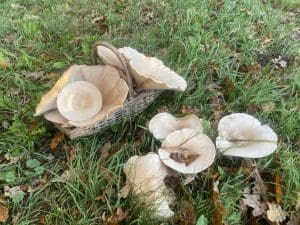
Scientific name
Infundibulicybe geotropa
Family
Tricholomataceae
Habitat
This mushroom grows in leaf litter of deciduous trees but can sometimes grow with pine needles, either in woodland or on grass verges.
Identifying features:
Cap:
The pale cream turning buff brown with age, the caps on these mushrooms can be very large up to 20cm in diameter, they are depressed with an umbo (small lump) in the centre. This umbo is one of the key features to tell it apart from some of the other funnels. The cap edge is furrowed (enrolling slightly)
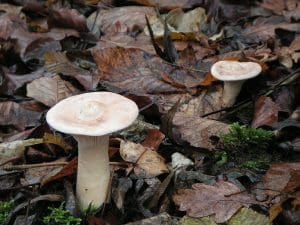
Stem:
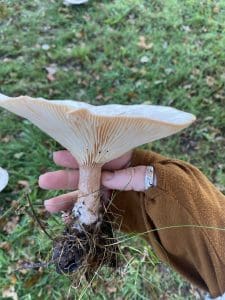
The stem of a trooping funnel is incredibly tough and fibrous, they’re quite hard to break. The base is swollen and can be woolly around the bottom. Similar colour to the cap and gills,
Gills
The gills are decurrent, (running down the stem) Fairly crowded with smaller intermediate gills between the full sized ones.
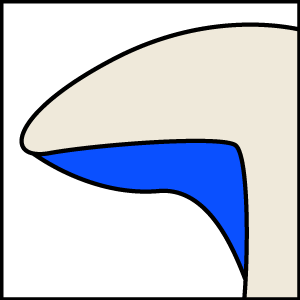
Smell:
Sweet aromatic mushroomy smell
Spores:
White
Differences
The young mushrooms can have a flattened cap, which depresses with age, the umbo is much more obvious at this stage

Uses
Great edible mushroom, fabulous texture and flavour.
In Food
The stems are a bit tough so often discarded. This mushroom has a wonderful firm texture and can be used as a meat substitute in many dishes.
Harvesting
As they grow in rings, you often find many mushrooms at once. I use a knife to harvest these mushrooms as the stem is to tough to break cleanly with your hands.
Known Hazards
Must be cooked before consumption as can cause gastric upset when raw
Possible Lookalikes
The Fools funnel (Clitocybe rivulosa) Smaller and doesn’t have the central umbo
The clouded Agaric (Clitocybe nebularis) more grey in colour and less depressed caps.



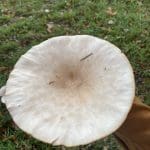
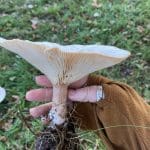

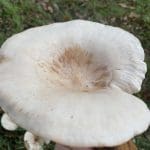
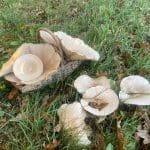
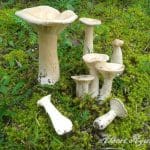
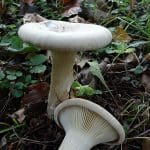



Leave a Reply
You must be logged in to post a comment.